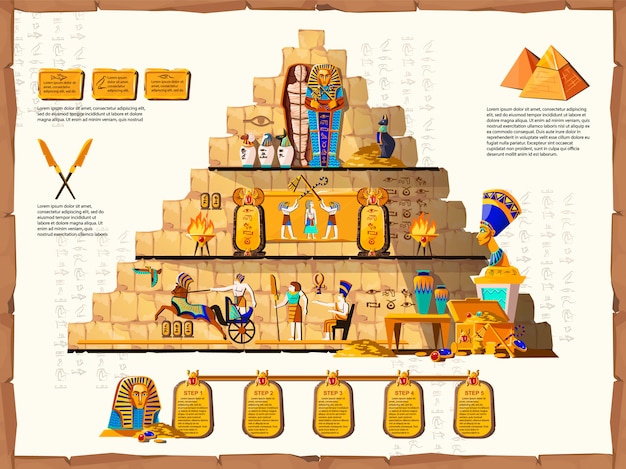Fascinating Facts about Hatshepsut

Hatshepsut was the first female pharaoh of ancient Egypt.
She ruled Egypt for over 20 years.
Hatshepsut was known for ruling with great intelligence and diplomacy.
She was the stepmother of Thutmose III, who became pharaoh after her death.
Hatshepsut was the daughter of Thutmose I and Queen Ahmose.
She was a skilled politician and administrator.
Hatshepsut was responsible for many major building projects, including the famous Mortuary Temple of Hatshepsut.
She was known for promoting trade and expanding Egypt’s wealth through her expeditions to Punt.
Hatshepsut was often depicted wearing traditional male pharaoh attire, including the pharaoh’s crown and false beard.
She declared herself as pharaoh during a time of political instability after her husband’s death.
Hatshepsut claimed divine birthright, stating that she was the daughter of the god Amun-Ra.
She was one of the most successful and influential pharaohs in Egyptian history.
Hatshepsut’s reign was one of peace and prosperity for Egypt.
She commissioned magnificent statues, reliefs, and monuments that still exist today.
Hatshepsut was known for her unique and influential artistic style.
She encouraged the worship of an Egyptian goddess named Hathor.
Hatshepsut was a great patron of the arts and sciences.
She reestablished the importance of the god Amun in Egyptian religion.
Fascinating Facts about Hatshepsut part 2
Hatshepsut’s reign saw significant advancements in Egyptian architecture.
She was a skilled military strategist, leading successful campaigns against Egypt’s enemies.
Hatshepsut’s mummy was discovered in 1903, solving the mystery of her final resting place.
She was known for her remarkable mortuary temple at Deir el-Bahri.
Hatshepsut’s reign marked a golden age of trade and prosperity for Egypt.
She was one of the few female rulers in ancient history to have her own official tomb.
Hatshepsut was called Maatkare, which means truth is the soul of the sun.
She was the first pharaoh to use the title God’s Wife of Amun for a female.
Hatshepsut’s reign is often referred to as the Age of the Pharaoh Queens.
She was renowned for her intellectual pursuits and knowledge of ancient Egyptian history.
Hatshepsut’s temple was designed to align with astronomical events, showcasing her understanding of celestial bodies.
She was a proponent of creating new trade routes and forging alliances with foreign nations.
Hatshepsut’s image was intentionally defaced after her death to erase her legacy.
She was believed to possess strong connections to the gods and had divine protection.
Hatshepsut’s mortuary temple is considered one of the greatest architectural achievements of ancient Egypt.
She was an influential and respected leader, both domestically and internationally.
Hatshepsut’s reign saw the construction of many impressive obelisks throughout Egypt.
She was known for her grandiose coronation ceremonies, displaying her power and prestige.
Hatshepsut’s rule was marked by a focus on cultural enrichment and the preservation of ancient Egyptian traditions.
She is credited with expanding Egypt’s vast trading network and bringing rare and exotic goods to the kingdom.
Hatshepsut’s legacy lives on as one of the most successful pharaohs in Egyptian history.
She was a trailblazer for female leadership, breaking barriers and proving that women could rule effectively.
Hatshepsut was known for her forward-thinking policies, which prioritized the well-being of her people.
She was a skilled diplomat, negotiating peaceful agreements and alliances with neighboring kingdoms.
Hatshepsut’s reign saw the construction of several impressive temples dedicated to various gods and goddesses.
She encouraged the arts, sponsoring talented artists, musicians, and writers.
Hatshepsut’s reign is remembered as a time of stability and prosperity, leaving a lasting impact on ancient Egypt.

